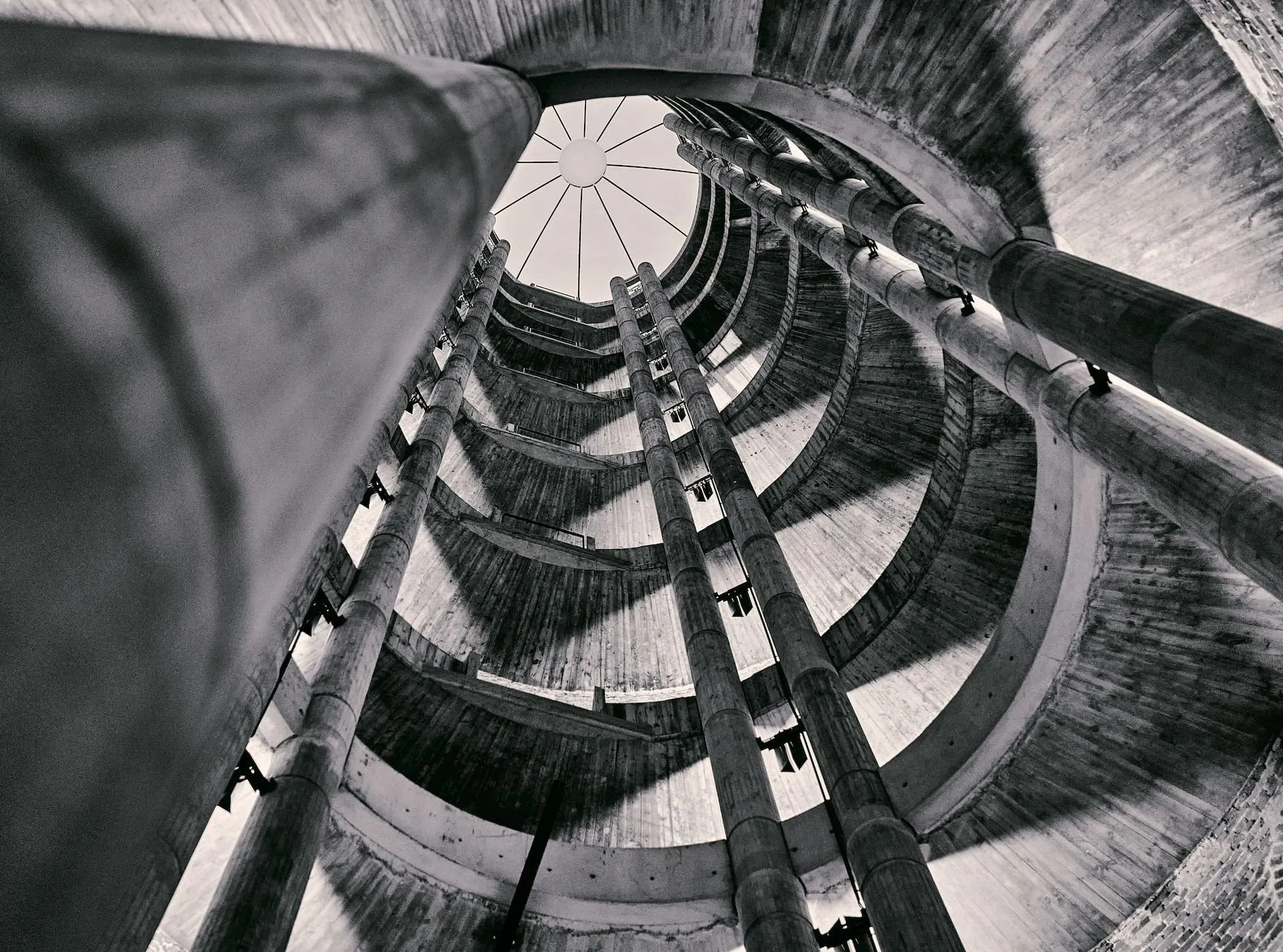Create a Spiral Drawing with JavaScript and canvasSketch

Learn how to code a spiral drawing using the canvasSketch library in JavaScript. This tutorial provides a step-by-step guide with explanations.
The canvasSketch library in JavaScript allows you to create interactive visuals within your web browser. This guide demonstrates how to code a spiral drawing using canvasSketch. We’ll cover setting up the environment and implementing the spiral effect.
CanvasSketch
We will be using CanvasSketch to organise our code. It is a collection of tools, modules and resources for creating generative art in JavaScript and the browser.
const canvasSketch = require("canvas-sketch");const math = require("canvas-sketch-util/math");const random = require("canvas-sketch-util/random");
const settings = { dimensions: [1080, 1080],};
const sketch = () => { return ({ context, width, height }) => { // Fill the background with white context.fillStyle = "white"; context.fillRect(0, 0, width, height);
// Set fill style to black for the following shapes context.fillStyle = "black";/** * rest of the code .... */Setting up
Import the necessary libraries
- canvas-sketch
- canvas-sketch-util/math
- canvas-sketch-util/random
Finding the canvas center
Calculate the center coordinates (x and y) by dividing the width and height by 2 and storing them in variables like cx and cy.
Shaping the rectangle
Define the width (w) and height (h) of the rectangles as a percentage of the canvas size.
Creating the spiral
Use a loop to iterate through a set number of rectangles (num).
Inside the loop:
- Calculate the angle (angle) for each rectangle’s placement using
math.degToRad(360 / num). - Find the x and y coordinates (x and y) of the rectangle’s center using the angle, radius, sine, and cosine functions.
- Use
context.save()to store the current drawing state. - Translate the origin to the center of the rectangle using
context.translate(x, y). - Rotate the context by the negative of the calculated angle using
context.rotate(-angle). - Scale the rectangle horizontally with a random value between 1 and 3 using
context.scale(random.range(1, 3), 1). - Define the rectangle’s shape using
context.rectand offset it slightly from the center. - Fill the rectangle with black using
context.fill(). - Restore the previously saved drawing state using
context.restore().
Check out this other post where I explain save and restore : Understanding save and restore
// Calculate the center coordinates of the canvasconst cx = width * 0.5;const cy = height * 0.5;
// Calculate the width and height of the rectangle to be drawnconst w = width * 0.01;const h = height * 0.1;
let x, y;
const num = 12;const radius = width * 0.3;
// Loop to draw multiple rectangles in a spiral patternfor (let i = 0; i < num; i++) { // Calculate the angle for each rectangle placement const slice = math.degToRad(360 / num); const angle = slice * i;
// Calculate the x and y coordinates for the rectangle's center x = cx + radius * Math.sin(angle); y = cy + radius * Math.cos(angle);
// Save the current drawing state (transformations applied here won't affect future elements) context.save();
// Move the origin (0, 0) to the center of the current rectangle context.translate(x, y);
// Rotate the context by the negative of the calculated angle for a spiral effect context.rotate(-angle); // Randomly scale the rectangle horizontally between 1 and 3 times its original size context.scale(random.range(1, 3), 1);
// Define a rectangle with a slight offset from the center based on its width and height context.beginPath(); context.rect(w * 0.5, h * 0.5, w, h);
// Fill the rotated rectangle with black context.fill();
// Restore the previously saved drawing state (important to avoid affecting subsequent rectangles) context.restore();}Key concepts
Radians and Degres
While angles can be measured in degrees (e.g., 45 degrees), trigonometry functions typically work with radians. Radians are a unit of angular measurement based on the ratio of the arc length to the circle’s radius. There are 2π radians in a full circle (360 degrees). The math.degToRad() function in canvasSketch helps us convert degrees to radians for compatibility with the trigonometric functions.
Calculating the angle
Inside the loop, we calculate the angle (angle) for each rectangle’s placement. The formula is angle = math.degToRad(360 / num) * i, where i represents the current iteration number (0 to num-1). This essentially divides the full circle (360 degrees) into num equal angles in radians.
Leveraging Sine and Cosine
Now comes the magic! We use the calculated angle (angle) with the sine (sin(angle)) and cosine (cos(angle)) functions to determine the x and y coordinates of the rectangle’s center. These coordinates are relative to the center of the canvas (which we might have stored in variables like cx and cy).
- X-Coordinate: We calculate the x-coordinate by multiplying the radius with the cosine of the angle (
radius * cos(angle)). As the angle increases, the cosine value oscillates between 1 (positive x-axis) and -1 (negative x-axis), creating the horizontal movement of the rectangles in the spiral. - Y-Coordinate**: Similarly, the y-coordinate is calculated by multiplying the radius with the sine of the angle (
radius * sin(angle)). The sine value oscillates between 1 (positive y-axis) and -1 (negative y-axis), resulting in the vertical movement of the rectangles, forming the spiral pattern.